Biodiversity and Ecosystems
At the UC San Diego Biology Field Station, researchers study honey bees and a variety of increasing of threats to their survival, including shifts caused by climate change. Here honey bees are shown at a sugar water feeder. Credit: Heather Bell.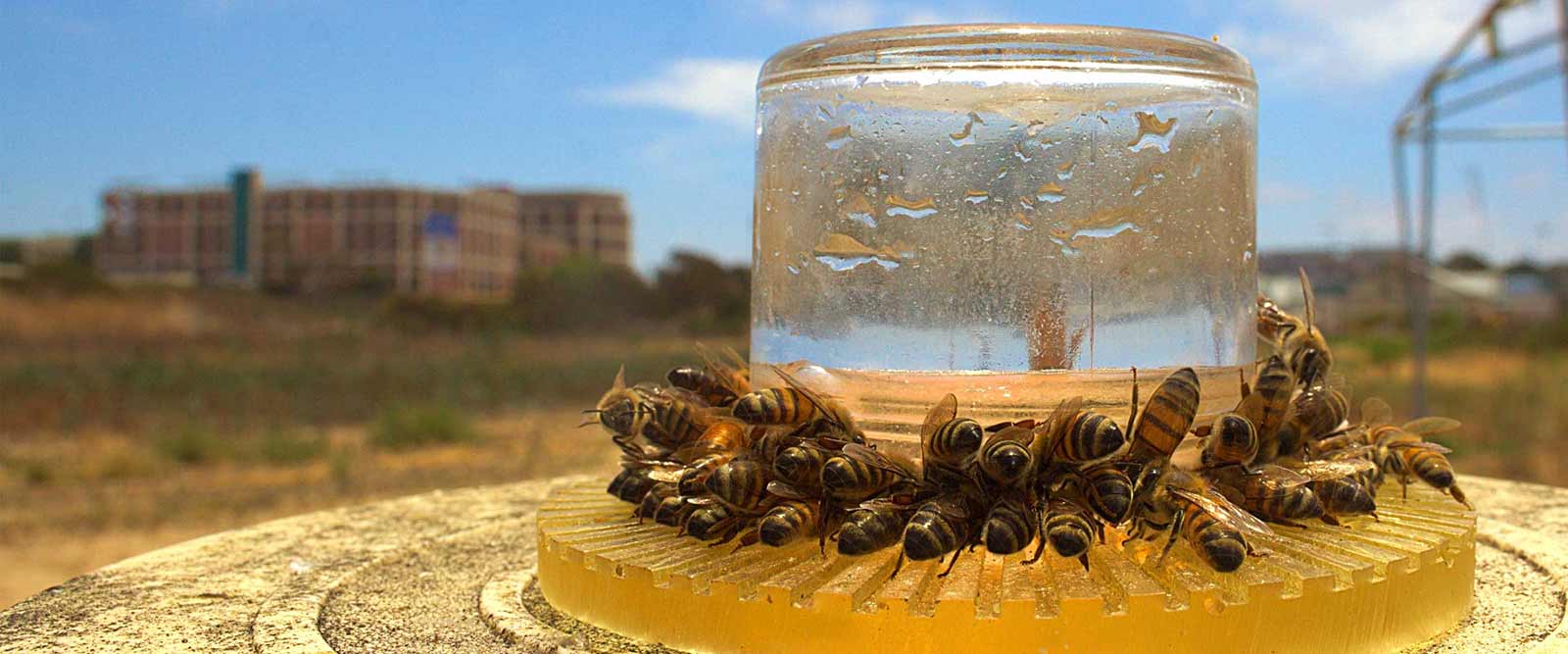
Studying past and current climate change impacts on individual organisms, species and ecosystems. Includes observational, experimental and theoretical research of the effects of changing climate patterns.
Featured Interdisciplinary Research Centers and Initiatives
Scripps Center for Marine Biodiversity and Conservation
The Center for Marine Biodiversity and Conservation at Scripps Institution of Oceanography promotes interdisciplinary research and educational approaches to maintain the integrity of ocean ecosystems and manage their use in the face of rapid and inevitable global change.
UC San Diego Natural Reserve System
Part of the University of California, the Natural Reserve System, is a network of protected natural areas throughout California. Its 36 sites encompass approximately 135,000 acres, making it the most extensive university-administered reserve system in the world.
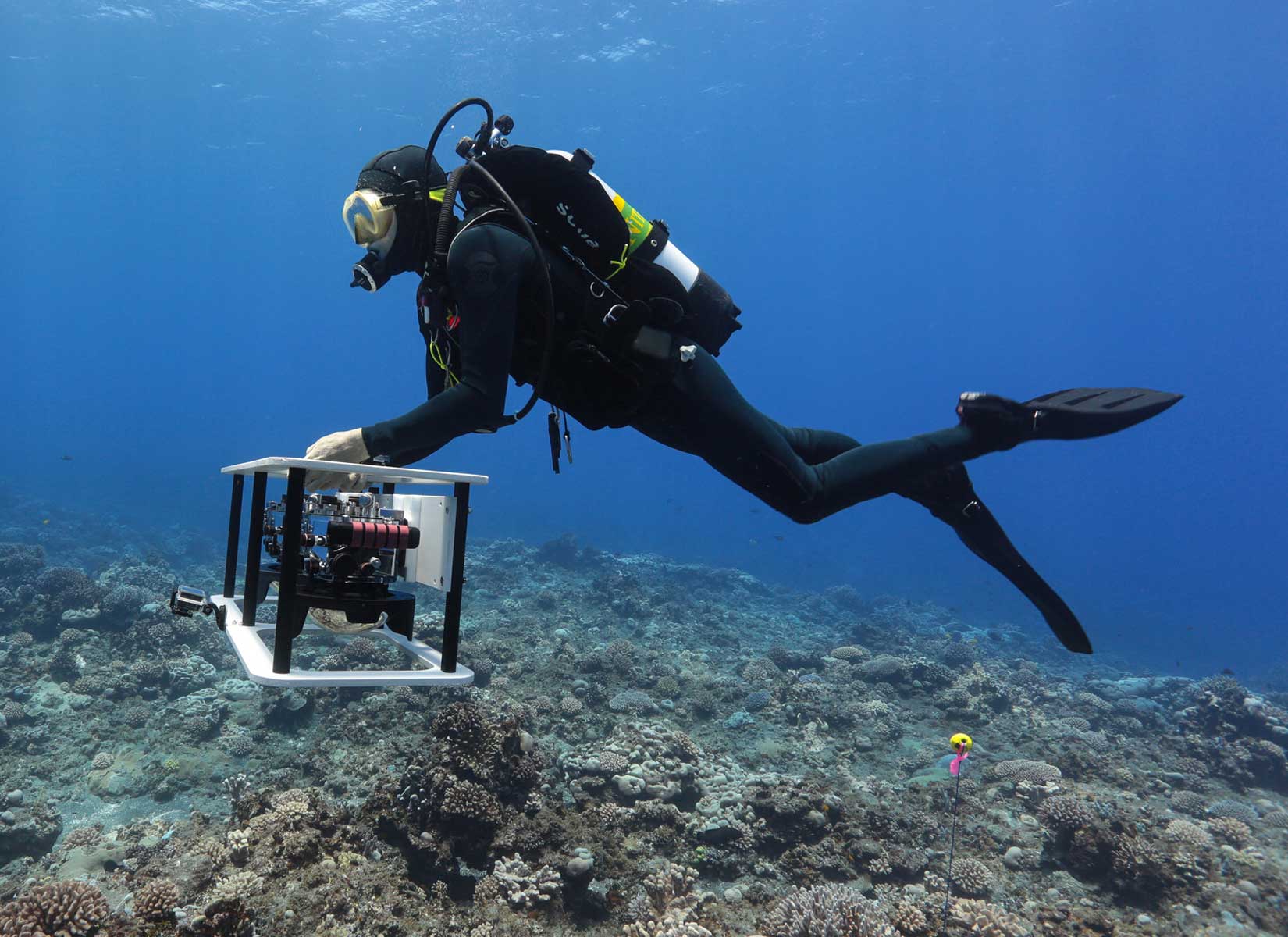
Coral reef researchers from the 100 Island Challenge at Scripps Institution of Oceanography canvas a reef in Palmyra. The images taken will be stitched into a 3D photo mosaic to further study and analyze the reef. Credit: Stefani Gordon.
Featured Researchers and Professors
Elsa Cleland
Assistant Professor, Ecology, Behavior and Evolution
Elsa Cleland evaluates the potential for ecological theory to predict how plant communities and ecosystems respond to global environmental changes, such as climate change and species invasions.
Lisa Levin
Distinguished Professor, Biological Oceanography and Marine Ecology
Lisa Levin researches how environmental conditions shape deep-sea communities on continental margins and how climate change impacts vulnerable ecosystems in the deep sea through ocean deoxygenation.
Research Areas
Oceans, Earth and Atmospheric Science
An expedition aboard UC San Diego’s Research Vessel Robert Gordon Sproul for the Observational Physical Oceanography course (SIO 176) trains students to collect physical oceanographic observations using CTDs, underway data, surface ocean data, bathymetry, surface drifters and more.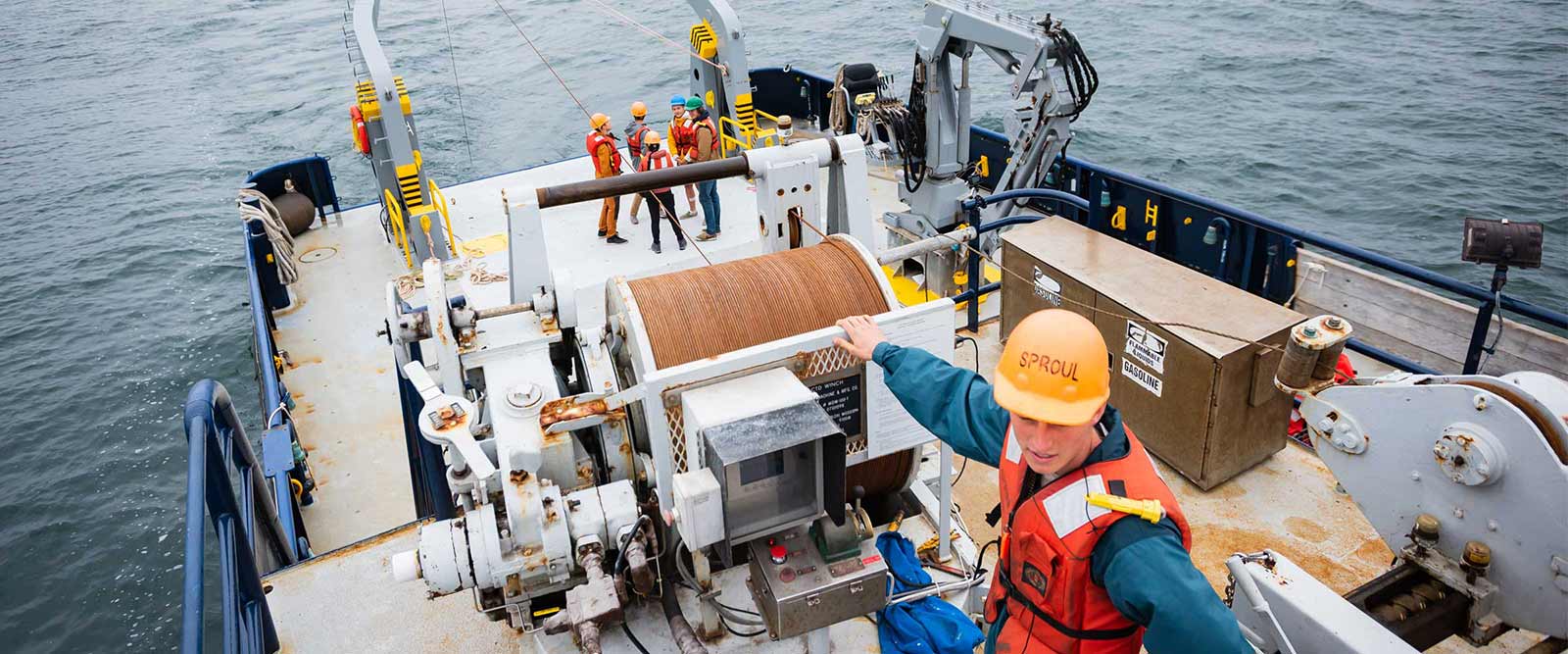
Researching the complex interaction between the oceans, atmosphere and land regarding the earth’s weather systems and climate change. Includes study of ocean acidification, rising sea levels, atmospheric carbon dioxide, impacts on the earth’s polar regions, etc.
Featured Interdisciplinary Research Centers and Initiatives
Center for Climate Change Impacts and Adaptation (CCCIA)
The Center for Climate Change Impacts and Adaptation (CCCIA) aims to build a more resilient future through the advancement of climate science, academic-community partnerships and adaptation strategies. The center’s work includes enhancing regional climate models, advancing research on natural variability versus climate change, applying scientific methods to inform adaptation strategies and pathways, providing science advisory services to at-risk communities, etc. In addition, CCCIA helps mobilize the many interdisciplinary researchers increasingly focused on climate impacts research throughout Scripps, UC San Diego and partner institutions to help communities better prepare for these threats and adapt to build a more resilient future.
Scripps Polar Center
The Scripps Polar Center brings together scientists from the three research sections of Scripps Institution of Oceanography at UC San Diego. They investigate everything from ocean physics to the ecology of polar organisms. They address the complex questions of today's polar regions while training a new generation of scientists capable of interdisciplinary research.

Scientists with Scripps Institution of Oceanography and colleagues establish the Greenland Ice Sheet/Ocean Observing System site in Greenland’s Helheim/Sermilik glacial fjord system to determine how and why ice sheets and melting glaciers are affected by climate change. Credit: Alex Hamel.
Featured Researchers and Professors
Helen Amanda Fricker
Professor, Geophysics in the Cecil H. and Ida M. Green Institute of Geophysics and Planetary Physics at Scripps Institution of Oceanography; Co-Director, Scripps Polar Center
Helen Amanda Fricker is a glaciologist whose research focuses on ice sheets in Antarctica and Greenland and their role in the climate system. She uses a combination of satellite radar and laser altimetry and other remote-sensing data to understand ice sheet processes. Fricker is widely recognized for her discovery of active subglacial lakes. She has shown that these lakes form dynamic hydrologic systems, where one lake can drain into another quickly. She is also known for her innovative research into Antarctic ice shelf mass budget processes such as iceberg calving and basal melting and freezing.
Ram Ramanathan
Professor of Climate, Atmospheric Science and Physical Oceanography; Climate Sciences; Physical Oceanography
Ram Ramanathan is an atmospheric scientist who discovered the greenhouse effect of chlorofluorocarbons (CFCs) showed that a ton each of CFC-11 and CFC-12 has more global warming effect than 10,000 tons of CO2. This discovery established the now accepted fact that non-CO2 gases are a significant contributor to planet-warming and enabled the Montreal protocol to become the first successful climate mitigation policy. Ramanathan also served as the science adviser to Pope Francis’ Holy See delegation at the historic 2015 Paris climate summit. He is also the architect of the curriculum for "Bending the Curve: Climate Change Solutions," designed to empower a million climate champions worldwide to solve the climate change problem.
Research Areas
Physical Sciences
The Center for Aerosol Impacts on Chemistry of the Environment (CAICE) conducts an experiment designed to study the impacts of human pollution on ocean emissions and climate using specialized wave tanks in the Hydraulics Laboratory at Scripps Institution of Oceanography. Credit: Erik Jepsen.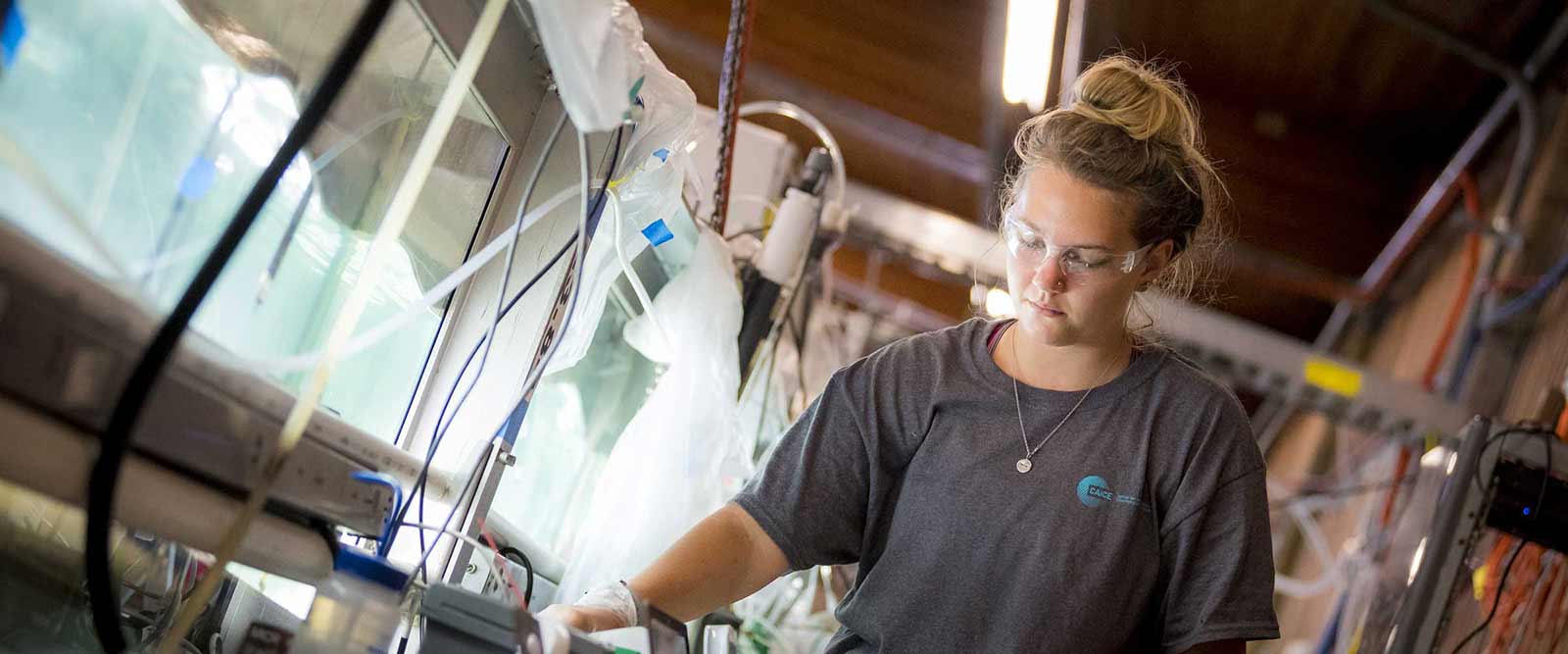
Researching the physical, dynamic and chemical interactions driving climate change, including aerosol chemistry and the physics of the interactions between the oceans and atmosphere.
Featured Interdisciplinary Research Centers and Initiatives
Center for Aerosol Impacts on Chemistry of the Environment (CAICE)
The Center for Aerosol Impacts on Chemistry of the Environment (CAICE) works to understand how aerosol particles impact the environment, air quality and climate. An interdisciplinary team of scientists supports the center’s work and includes atmospheric, physical, biochemistry, analytical and organic chemists, oceanographers and marine biologists.
Air-Sea Interaction Lab
The primary area of research is air-sea interaction, including the topics of surface wave dynamics, air-sea fluxes, upper ocean turbulence, including Langmuir circulations, and the remote sensing of ocean surface phenomena using electromagnetic and acoustic techniques.
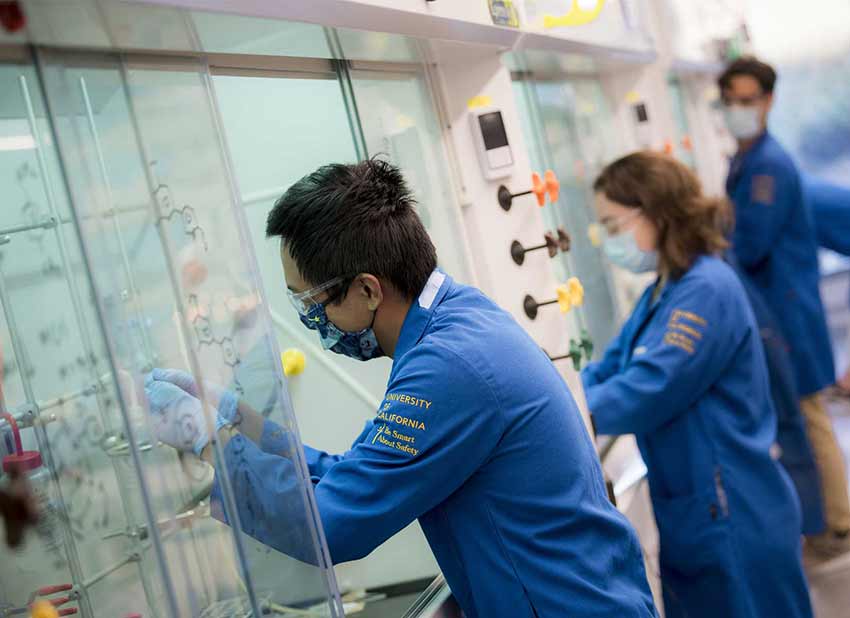
Researchers in the UC San Diego Chemistry and Biochemistry Department. Credit: Erik Jepsen.
Featured Researchers and Professors
Kimberly Prather
Professor of Climate, Atmospheric Science and Physical Oceanography; Climate Sciences; Marine Chemistry and Geochemistry
Atmospheric chemist Kimberly Prather conducts research focused on improving our understanding of how humans influence our atmosphere and climate. After developing a unique method for the online characterization of atmospheric aerosols' size and chemical composition, the Prather group now performs studies worldwide to understand the role of aerosols in climate change.
Tom Murphy
Professor, Physics; Associate Director, Center for Astrophysics and Space Sciences (CASS)
Astrophysicist Tom Murphy applies his knowledge of mass and energy to understanding the Earth’s finite resources and how humanity can experience growth and long-term sustainability in harmony with natural ecosystems.
Research Areas
Public Health Impacts
Studying the causes and prevention of human disease, with particular emphasis on air quality, aerosols, temperature and other climatic effects. Researchers also study the effects of climate change on human health, particularly from an epidemiological perspective. Weather extremes can have significant to extreme human health impacts. These impacts fall disproportionately on the economically disadvantaged, whether within less developed countries or the financially disadvantaged within wealthy nations. We quantify regional climate-health effects, analyze disparities and improve community resilience through applied climate, health, technology, and policy research, to promote local capacity building in vulnerable regions worldwide. Climate and Environmental Health studies the relationships between people’s health and their environment. This priority area aims to promote healthy environments and mitigate the negative effects of climate change and noxious contaminants in air, water, soil and food, with the goal of protecting communities and promoting people’s well-being. Associate Professor, Herbert Wertheim School of Public Health and Human Longevity Science; Scripps Institution of Oceanography Tarik Benmarhnia has a unique niche of combining epidemiology study design and health risk assessment expertise with climate and econometric models and a clear understanding of health policy. He is passionate about social science and equity in public health. Climate change disproportionately affects underserved populations and communities of color. Benmarhnia is studying how environmental justice plays a role in the health of a community, including risks for infectious diseases, pollutants, heatwaves and wildfires. Professor, Department of Pediatrics at UC San Diego School of Medicine Christina Chambers is interested in understanding how exposure to environmental compounds, such as pesticides, medications and infections, can affect embryonic development during pregnancy and childhood development via breastmilk. Chambers finds that climate concerns increasingly influence her work. The most difficult questions come after a natural disaster, like a hurricane or flood, in which pregnant people may be exposed to various toxins, pollutants, molds and infectious diseases.
Featured Interdisciplinary Research Centers and Initiatives
Climate Change Epidemiology Lab
Climate and Environmental Health
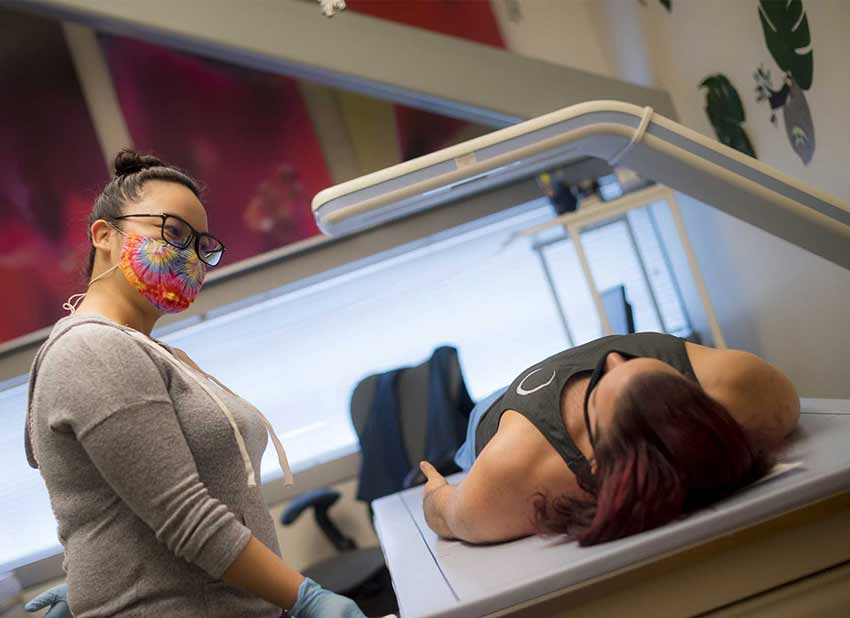
Featured Researchers and Professors
Tarik Benmarhnia
Christina Chambers
Research Areas
Extreme Weather
The WIFIRE Lab at the San Diego Supercomputer Center.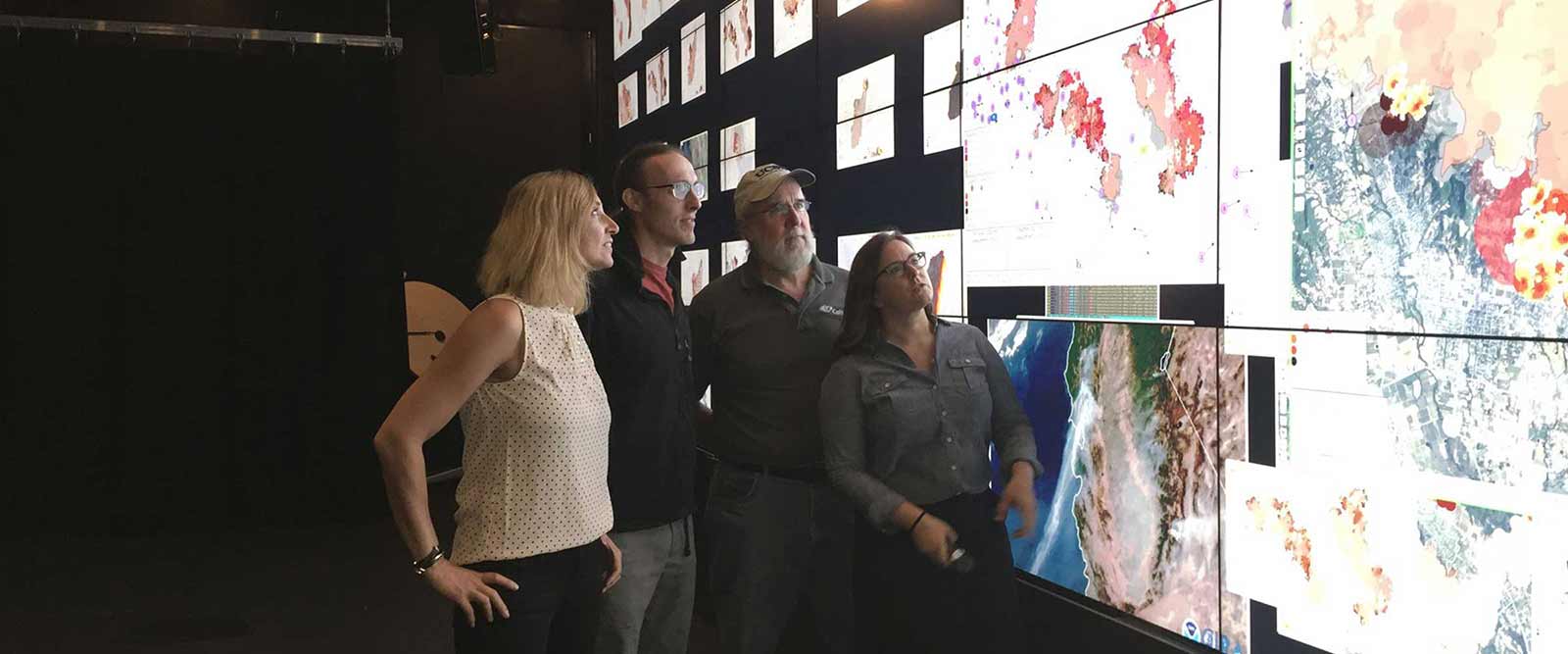
Studying the relationships between regionally impactful weather extremes and large-scale climate variability and change. Includes physical understanding, observations, weather predictions, seasonal outlooks and climate projections of extreme events and impacts such as heat waves, marine layer clouds, atmospheric rivers, precipitation regime change, winds and wildfire.
Featured Interdisciplinary Research Centers and Initiatives
WIFIRE Lab
The WIFIRE Lab uses the power of data science and supercomputing to provide officials with real-time fire models that help strategize the best approach to containment. They deliver continuous, predictive fire models using many data types, including the point of origin, nearby topography, weather and wind conditions, vegetation available as fuel and more.
Center for Western Weather and Water Extreme (CW3E)
The natural and socioeconomic systems that we depend upon are impacted by extreme weather events and their effects on water supply and flooding. The Center for Western Weather and Water Extremes (CW3E) works to revolutionize the physical understanding, observations, weather predictions, seasonal outlooks and climate projections of extreme events in Western North America, including atmospheric rivers, the North American summer monsoon and their impacts on floods, droughts, hydropower, ecosystems and the economy.
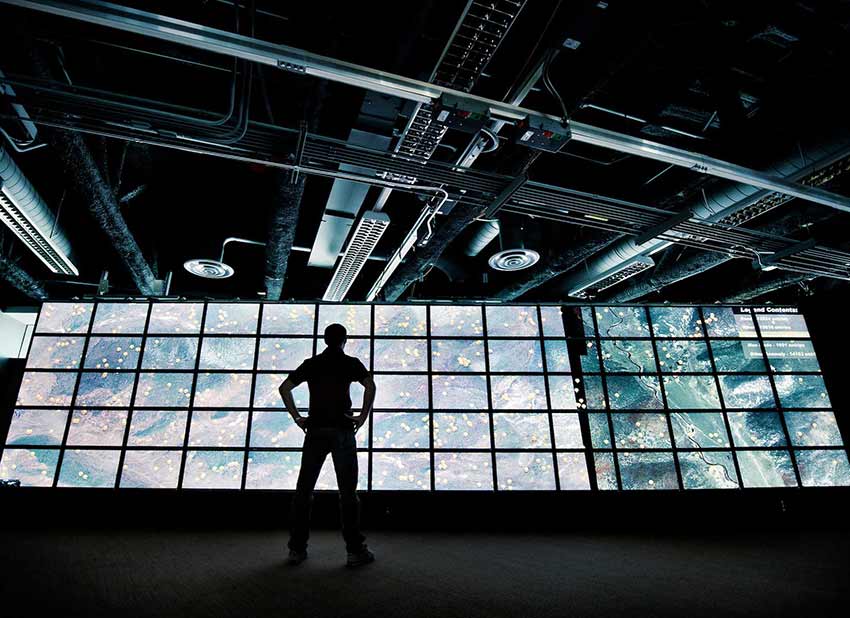
Featured Researchers and Professors
Ilkay Altintas
Chief Data Science Officer of the San Diego Supercomputer Center; Founder and Director of the WIFIRE Lab; Founding Fellow of the Halıcıoğlu Data Science Institute
Ilkay Altintas is a technical leader in many cross-disciplinary projects, including the WIFIRE Lab. The lab focuses on artificial intelligence methods for an all-hazards knowledge cyberinfrastructure to provide a management layer from the data collection to modeling efforts to help manage wildfires.
Marty Ralph
Director, Center for Western Weather and Water Extremes (CW3E)
Marty Ralph is a synoptic and mesoscale research meteorologist. His research focuses on the physical processes that create extremes in precipitation ranging from flood to drought and on advancing associated observations, predictions, climate projections and decision support tools. A primary topic has been atmospheric rivers and their role in mid-latitude precipitation.
